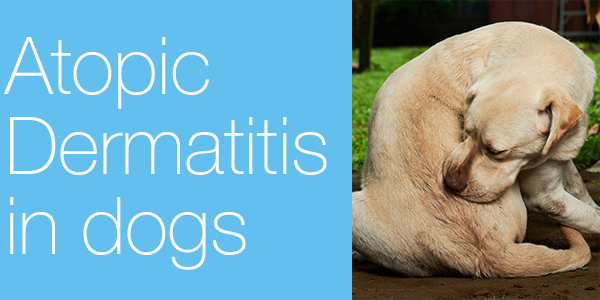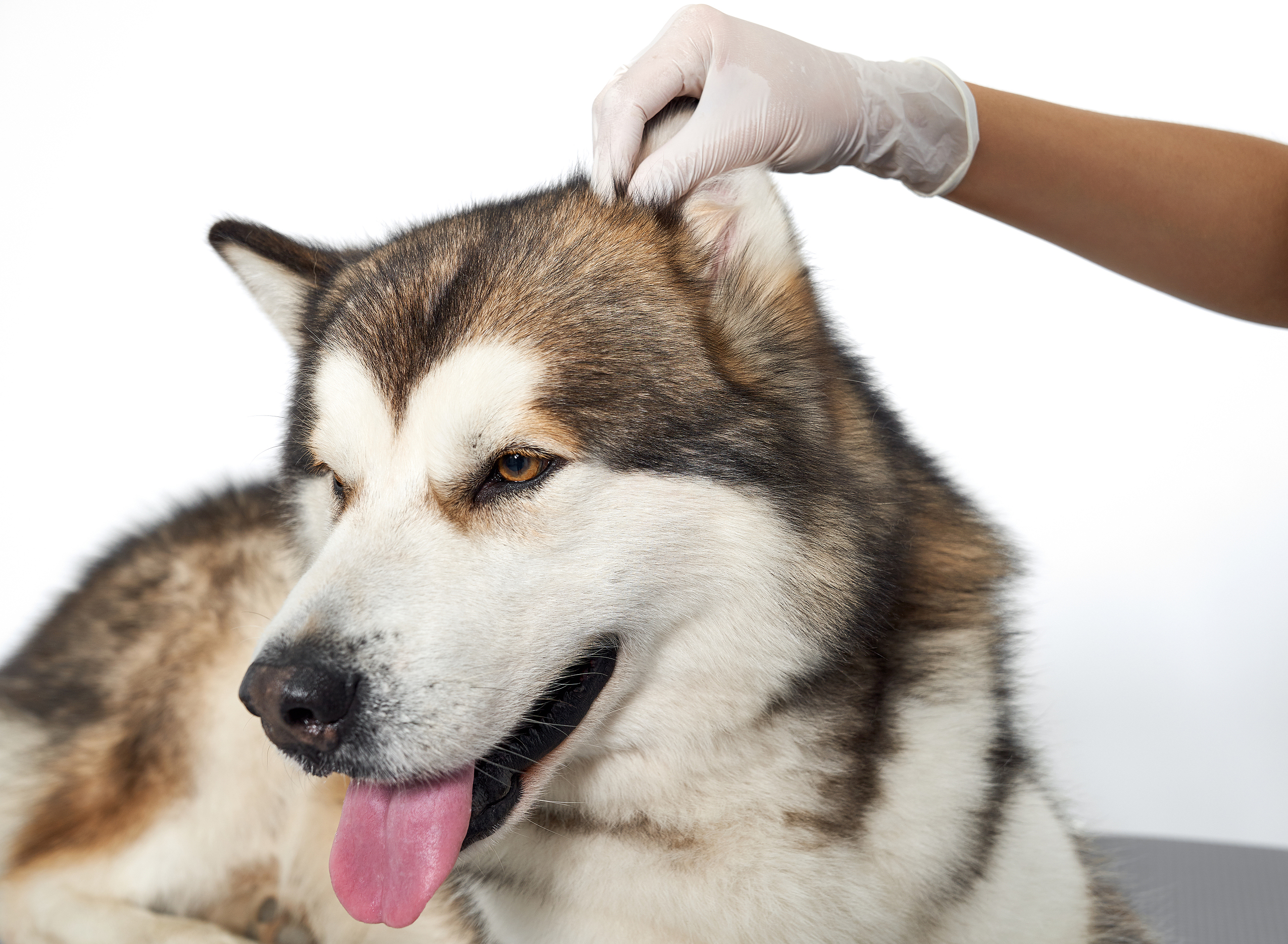




Atopic dermatitis (allergic dermatitis, atopy) is a very common skin condition where the dog’s skin is hypersensitive to environmental allergens, such as pollen, dust mites and moulds. Any dog can be affected however some breeds are over-represented, such as the West Highland White Terrier, Labradors and Bulldogs. Signs typically first occur between 1 and 3 years of age.


Affected dogs are itchy, this is known as pruritus. Pruritus manifests as scratching, licking, rubbing and chewing. They will often have ear and anal gland problems and suffer from repeat skin infections, hair loss and other skin changes such as pigmentation.
Your vet may suspect atopic dermatitis from the symptoms alone however they will probably suggest tests to look at the bacteria and yeast present on the skin, or down the ears, and will also suggest an ectoparasite treatment to rule out the involvement of fleas. Further tests are available to determine the specific allergens involved. This can be in the form of blood tests or intradermal testing – where small amounts of common allergens are injected into the skin to observe a reaction.


Atopic dermatitis is unfortunately a life-long problem. There is no cure, only management. If your dog has had intradermal or blood tests, it may be impossible to then avoid those allergens however allergen-specific immunotherapy may be an option. This is where a bespoke vaccine is made for your dog and injected monthly in an attempt to desensitise and reduce the reaction. It can take months to take effect so often other means of management are required alongside, at least initially.
Other forms of management often utilise medications including steroids, cyclosporine, antihistamines and novel treatments such as oclacitinib or monoclonal antibody injections. These all have different modes of action, different potential side effects and must be used as directed by your vet, sometimes for the rest of your dog’s life. Topical treatment in the form of shampoos, creams and ear treatments can help control the secondary bacterial and yeast infections, as well as removing allergens from your dog’s coat and keeping them more comfortable.
Oral skin supplements containing omega-3 and omega-6 essential fatty acids and antioxidants can reduce inflammation of the skin, improve skin barrier function and have a possible drug-sparing affect, meaning less drugs and less side effects. This makes essential fatty acid supplements an important component in the long term strategy of keeping the symptoms of atopic dermatitis at bay.
Selected Sources
- Marchegiani et al (2020) ‘Impact of nutritional supplementation on canine dermatological disorders’ Veterinary Sciences 7(38)
- Baumer W. (2020) ‘Pharmocotherapy of canine atopic dermatitis – current state and new trends’ Ankara Universitesi Veteriner Fakultesi Dergisi 67(2) p.107-111
CONTACT
Copyright © Natural VetCare 2019
Security & Privacy | Cookies | Terms & Conditions





